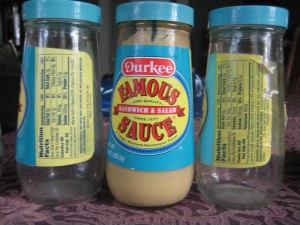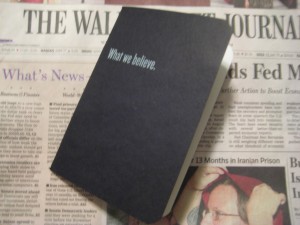I was introduced to Durkee’s Famous Sauce as a college freshman at the home of my roommate Reynold. His mother invited a homesick boy into their home for Thanksgiving and I discovered a ritual which included eating leftovers in sandwiches the day after with turkey, cranberry sauce, last night’s wilted salad, reheated dressing and gravy if you wanted it… all served on sturdy bread with a generous slathering of Durkee’s. That day their ritual became my own tradition.

Durkee’s Famous Sauce is a niche product, literally, that somehow manages to hold onto a sliver of shelf space in many supermarkets year after year. It is a mayonnaise-mustard combination with extra richness that tastes like additional egg yolks… but the effect in a sandwich is more complex than that. It’s the sauce that holds its own when a lot of flavor notes are present. And though I know there are other uses, it is such a perfect partner with turkey (smoked as well as Thanksgiving leftovers) that I have never wanted to venture further.
There is lore suggesting Durkee’s is a traditional American recipe that was served, among other places, in the White House by Mary Todd Lincoln. But in fact the recipe has been through some changes over the years, as has the provenance of the expensive little jars. During my time the proprietorship has shifted from Burnes Foods of San Francisco (but manufactured in Canada), Tone Brothers of Ankeny IA, and currently ACH Food Companies of Memphis. The ingredient list shows that corn oil has been replaced by soy oil and water has moved ahead of vinegar as the second component with subtle changes in the preservatives further down the line.
By the time I am ready to open a new jar, the old one is either empty or pretty well past its prime so I have never been able to do a head to head taste test. But I do believe that the taste has remained consistent through all these permutations. Hats off to the food chemists… and Thanksgiving leftovers!
